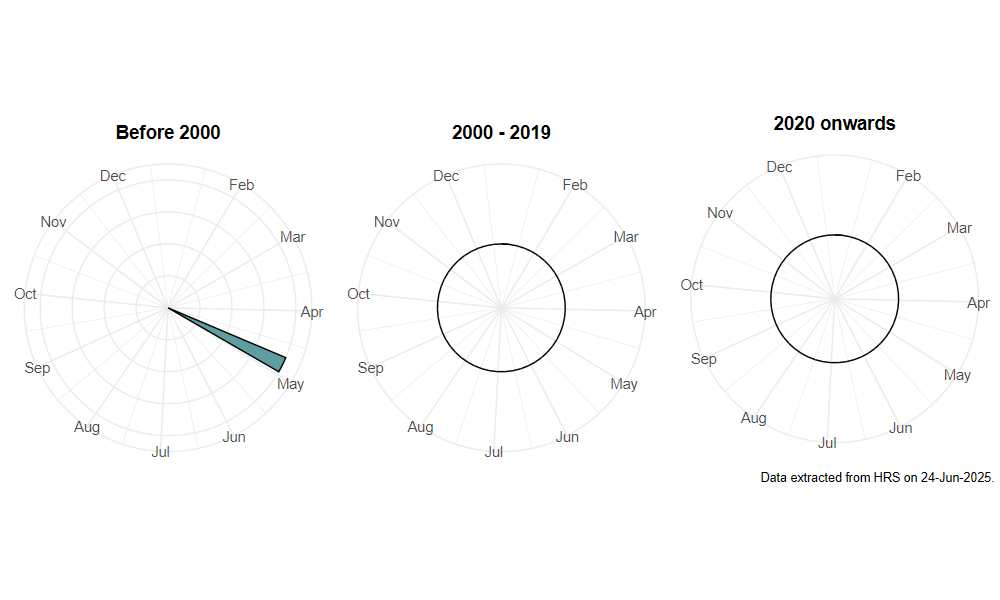Epistrophe ochrostoma (Zetterstedt, 1849)
Identification
Identification difficulty = 5. ![]()
![]() according to Ball & Morris, 20241
according to Ball & Morris, 20241
Biology
The larvae of this genus are aphidophagous, and mainly associated with trees, but also shrubs and tall herbs. In continental Europe adults are found in woodland clearings, perhaps including those in conifer forests, often flying rather high (Speight, 1988)2.
Flight period
The following plots show the number of unique records per week that were not reported to be of eggs, larvae or pupae.

Status
DATA DEFICIENT - Ball & Morris, 20143.
Distribution
This species was added to the British list on the basis of a single specimen found by David Heaver on a partly wooded slope on the south side of the Menai Strait in North Wales (Heaver, 1990)4. The occurrence of this species in Britain was predicted by Speight (1988)2 and separation from other British members of the genus is dealt with by Speight (1988)2 and Stubbs (1996)5. There have been no further specimens and therefore it seems likely that this is not a resident species.

-
Ball, S., & Morris, R. (2024). Hoverflies of Britain and Ireland. WILDGuides (3rd ed.). Oxford: Princeton University Press. ↩
-
Speight, M. (1988). Syrphidae known from temperate Western Europe: potential additions to the fauna of Great Britain and Ireland and a provisional species list for N. France. Dipterists Digest (first series), 1, 2–35. ↩ ↩ ↩
-
Ball, S., & Morris, R. (2014). A review of the scarce and threatened flies of Great Britain. Part 6: Syrphidae. ( No. 9). Species status (pp. 1–130). Peterborough: JNCC. ↩
-
Heaver, D. (1990). Epistrophe ochrostoma: new to Britain. Hoverfly Newsletter, 10, 8. ↩
-
Stubbs, A. (1996). British Hoverflies. Second (revised and enlarged) supplement. Reading: BENHS. ↩